 |
Maurizio
Bianchi / M.B. / Sacher-Pelz
Italian composer Maurizio Bianchi (1955)
produced his first tapes of noise in the early
1980s, at the peak of the industrial scene, but
his chaotic dissonant orgies harked back to the
musique concrete of the 1950s, despite similarities
with Nocturnal Emissions, Metabolist, Whitehouse,
early Throbbing Gristle. He debuted under the
moniker Sacher-Pelz with the home-made cassettes
Cainus (1979), Venus (1980), Cease To Exist and
Velours, later collected on Mutation For A Continuity
(Ees'T). They were all-instrumental collages of
electronic sounds. Mectpyo/Blut (1980) was the
first cassette to be released under his own name.
Under the moniker Leibstandarte, Bianchi released
his first vinyl albums: Triumph of the Will (Come
Organization, 1981), which recycled material already
released on cassette, and Weltanschauung (1982).
His most relevant works came out under his own
name: Symphony For A Genocide (Sterile, 1981),
possibly his most terrifying work, Nh/Hn (Grafika
Airlines, 1981), Menses (Mecptyo Sounds, 1982),
another classic of horror-shock musical reportage,
divided in two lengthy suites (particularly Scent).
There followed less powerful works, such as the
film soundtrack Morder Unter Uns (Mectpyo Sounds,
1982), and two "softer" albums divided in two
lengthy halves each, Regel (Mecptyo Sounds, 1982)
and Mectpyo Bakterium (DYS, 1982), possibly his
softest album of the decade. He quickly return
to his usual standards with Endometrio (Mecptyo
Sounds, 1983), his second artistic peak and the
manifesto of his "bionic" aesthetics, the more
accessible Carcinosi (Mecptyo Sounds, 1983), Das
Testament (Mectpyo Sounds, 1983), announced as
his last record and containing two of his most
extreme suites, and the film soundtrack Armaghedon
(Mecptyo Sounds, 1984), all of them comprised
of lengthy free-form suites of noise. The one
notable exception was The Plain Truth (Broken
Flag, 1983), in the vein of German electronic
music. Industrial Murder (Banned Production, 1992)
and Aktivitat (Zabriskie Point, 1992) collect
unreleased and rare material.
After a long hiatus, Bianchi returned to music
with a metaphysical trilogy of sort, Colori (Ees'T,
1998), First Day Last Day (Ees'T,1999) and Dates
(Ees'T,2001), in which religious and philosophical
themes dominate, and the sound is much calmer
and almost ambient, while Frammenti (Ees'T,2002)
and Antarctic Mosaic (Ees'T,2003) seemed to hark
back to his original style of the 1980s.
Chaotische Fraktale (2003) and Letzte Technologie
(2004) are collaborations with Frequency In Cycles
Per Second (Sandro Kaiser). Zehn Tage/Touka (Afe,
2004) and The House Of Mourning (Radiotarab, 2005)
were collaborations with German duo Telepherique.
Through these collaborations, Bianchi slowly returned
to atonal industrial music. The hypnotic Cycles
(Ees't, 2004) explored different kinds of loops
and pauses. A M. B. Iehn Tale (Small Voices, 2004),
a collection of "piano decompositions," (minimalist/ambient
pieces for piano and electronic dissonances) and
the double-CD Mind Us Trial (EEs't, 2005) continued
his regression to darker moods. M. I. Nheem Alysm
(Silentes, 2005) contains two lengthy piano suites
a` la Cycles (Ees't, 2004). Blut und Nebel (Slaughter,
2005), that "remixes" the first ten LPs of the
early 1980s, is an excellent demonstration of
Bianchi's skills at dadaistic collage, free-form
improvisation and abstract soundsculpting, as
accrued over twenty years of electronic manipulation.
Noise is employed like an electric guitar to produce
solos of manic intensity. Junkyo (Noctovision)
and Mectpyo Saisei (Para Disc) are collaborations
with Aube. New collaborations include: Psychoneurose
(Manifold, 2005) with Land Use, one of the best
of this phase, Final Signal (2005) with Frequency
In Cycles Per Second, Secluded Truths (Silentes,
2005) with NIMH. Bianchi's prolific career continued
with Niddah Emmhna (Silentes, 2005), Neuro-munalp
(Small Voices, 2005), Men's True Hated (Menstrualrecordings,
2005), The Testamentary Corridor (Staalplat, 2006).
The Epidemic Symphony No 9 (Octpia, 2006) is actually
a work mainly by Japanese soundsculptor Hitosji
Kojo. Arkaeo Planum (Small Voices, 2007) is a
collaboration with Italian sound artist TH26.
Psalmodiam (Menstrual Recordings, 2007) was a
collaboration with M.D.T that was based on Psalm
63 (Bianchi is a devout Jehovah's Witness). The
4-cd set Together's Symphony (Silentes, 2006)
is a collaboration with NIMH (Italian composer
Giuseppe Verticchio).
In recent years also many reissue of deleted material
were released.
On August 19, 2009, due to non specified personal reasons, Maurizio Bianchi decided again to completely stop making music.
BACK TO TOP
|
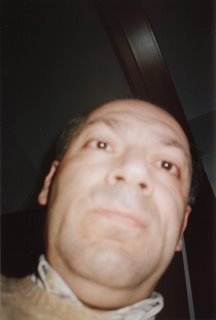
|
|
Efficient
Refineries 
The project "Efficient Refineries" has been founded by Miguel A. Ruiz (Spain) and Siegmar Fricke in 1995. After two net-albums ("Kronotrop" on SONUX.RU + "NITIDEATH" on WITHERING TREES) and the CD "Epinervio" on MENSTRUALRECORDINGS, the project has been reactivated in May 2011 during Miguel's visit at Pharmakustik-studio in Germany where the fourth epic album "Plank Tone" has been recorded during several night-sessions. This new album offers six new complex pieces entering the world of subaquatic atmospheres, seaweed, corals and microscopic algae realised by new techniques in audio-recording and the excessive use of vintage-equipment from the early 70s period like Farfisa-organ, various analogue synthesizers, modulators and a nostalgic rhythm-box. The 11-minute opener "Aphotic Sunrise" reaches a new level in ambient atmospheres; a level of depth, warmth, sound-research, treatment and innovation...it defines a new unusual style of ambient spheres. The album combines elements of early-70s-avantgarde, noises, very well structured rhythms and sequences plus bizarre voice-treatments and stands for Efficient Refineries' definition of innovative electronica 2011.
BACK TO TOP
|
 |
|
MDT
( Museo Della Tortura ) 
MDT
is an Italian project born in September
2003. In the beginning MDT was orientated
toward rithmic noise but then the sound
evolved more and more into death industrial/ambient.
Behind MDT there is just one person : Davide
(synths, effects, wave manipulation and
rarely voice).
The project is still active though at the moment is on stand-by.
Selected discography:
- museo della tortura (2003) [virus4.it] rithmic noise
- sex & chainsaws (split with dnd) [self prod] cinematic noise
- power is nothing... (2004) [virus4.it] death industrial
- rumori di fondo/d pression (single split with dnd) (2004) [virus4.it]
- three faces of violence (2005) (split con dnd e toby dammit) [self prod] rithmic noise
- la fine (2005) [virus4.it] rithmic noise
- genologic technocide (collaboration con MB) (2006) [spatter - pagan moon]
- ossessioni di un provinciale (2006) [seven sermones ad mortuos] death industrial
- psalmodiam (collaboration con MB) (2007) [menstrualrecordings]
- night terror (2007) [virus4.it] death industrial...
BACK TO TOP
|
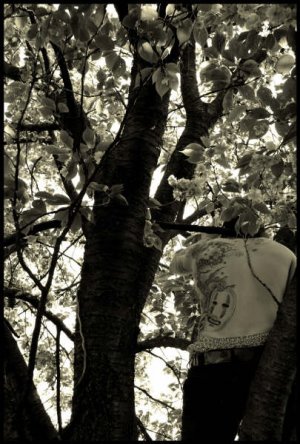 |
|
Orfeon Gagarin 
Miguel
Angel Ruiz, from Madrid, is one of the main
reference names of the Spanish experimental
electronic music. He created in 1986
his own label of cassettes called Toracic
Tapes. Since then, in this and other,
European and American labels, he has published
an extensive catalogue of recordings using
different pseudonyms depending on each project:
Orfeón Gagarin (the most famous), Ventral
Metaphor, Funeral Souvenir, besides the
many works edited under his own name or
as Exhaustor from the advanced 90s. M.A.
Ruiz started in 1982 to record in his house
musical pieces, centred in the abstract
and pseudocosmic electronic music with his
new Korg MS-20. In 1986 he inaugurates the
catalogue of Toracic Tapes with the legendary
first cassette of Orfeón Gagarin, an eclectic
combination that presents from environmental
sounds to industrial noise, including cut-up
exercises and some ethnic contrast. From
there, Miguel A. Ruiz's production is non-stop,
editing between 1986 and 1992 more than
a dozen cassette recordings either signing
as Orfeón Gagarin or with his real name
or with the alias Funeral Souvenir or Ventral
Metaphor. Works such as "KEDR" (Orfeón Gagarin;
Toracic Tapes, 1987), "Batan Bruits" (Orfeón
Gagarin, shared with Francisco López; I.E.P.,
1987), "La Noche del Anhídrido" (Funeral
Souvenir; Toracic Tapes, 1987), "El Niño
Carburador" (Miguel A. Ruiz; Línea Alternativa,
1989), "Biscuit Circuit" (Ventral Metaphor;
Bestattungsinstitut, 1991) or "Vasarely"
(Miguel A. Ruiz; Hyades Arts, 1991) are
today considered worthy of worship by the
Spanish electronic experimentation panorama.
In 1991 a tape sent to Asmus Tietchens will
finally give place to what will be his first
and magnificent LP "Encuentros en la Tercera
Edad" (Miguel A. Ruiz; published by Hamburger
Musikgesellschaft, Tietchens' label), recorded
in Hamburg with Tietchens and Okko Bekker.
Already in 1994 appears "Contestación Capilar",
Orfeón Gagarin's compilation CD published
by Línea Alternativa / Hyades Arts and two
years later, in 1996, with the name Exhaustor,
he presents a new sonorous facet orientated
towards the most rhythmic and ruthless techno,
whose presentation was "Coaxial" (CD, Línea
Alternativa, 1996). Miguel A. Ruiz has collaborated
actively with other artists such as Luis
Mesa (creator of the cassettes label I.E.P.),
with whom he will edit three tapes in between
1986 and 1989 under the name Técnica Material.
Also with the German Siegmar Fricke (Efficient
Refineries, with several CD-Rs published
from 1995 to 2003), Francisco López, Dieter
Mauson, etc. Next to Héctor Hernández he
published in 1989 the cassette "Han llegado
los robots" (I.E.P.), born as a hypothetic
soundtrack and whose source of reference
was the book by Rolf Strehl "Die Roboter
sind unter uns", from the end of the 50s.
"Han llegado los robots" is nowadays back
again due to its recent and really cared-after
remastered reedition.
BACK TO TOP
|

|
|
Kenji Siratori 
Kenji Siratori: a Japanese cyberpunk
writer who is currently bombarding the internet
with wave upon wave of highly experimental,
uncompromising, progressive, intense prose.
His is a writing style that not only breaks
with tradition, it severs all cords, and
can only really be compared to the kind
of experimental writing techniques employed
by the Surrealists, William Burroughs and
Antonin Artaud. Embracing the image mayhem
of the digital age, his relentless prose
is nonsensical and extreme, avant-garde
and confused, with precedence given to twisted
imagery, pace and experimentation over linear
narrative and character development. With
unparalleled stylistic terrorism, he unleashes
his literary attack. An unprovoked assault
on the senses. Blood Electric (Creation
Books) was acclaimed by David Bowie.
BACK
TO TO |

|
|
Dedali 
Real name: Alessandro Bosello
Alessandro Bosello began collecting field recordings in the year 1999.
It's in 2003 with the addition of some electronic devices that his sound experiments started.
The project Dedali is born in 2007.
In 2008 in collaboration with Disruptor the multimedia project series "La Fin Du Monde" is started.
The series receive excellent reviews.
Dedali's music is a mixture of heavily treated electronic and concrete sounds.
His music is described as Nightmare Ambient Electronics, Post Nuclear Music, Armageddon Music.
BACK
TO TOP
|
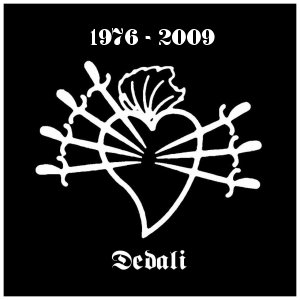
|
|
Disruptor 
Director
of experimental short-video from 25 years,has
directed more than 20 short-video. Is involved
with Dedali in the multimedia project La Fin du
Monde since 2008. Besides being director of his
videos he has collaborated with other directors
as first assistant director,cameraman and editor.
Currently engaged in other three volumes of La
Fin du Monde,the fourth segment is a tribute to
the cinema of the late director Jean Rollin and
a medium-length video tentatively titled Persona.
BACK
TO TOP
|
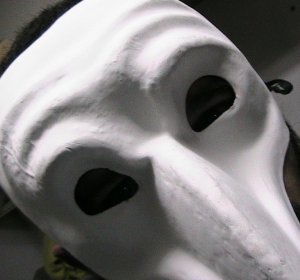
|
|
Siegmar Fricke / Pharmakustik
P H A R M A K U S T I K
In 1981 first musique-concrète-experiments with magnetophones and shortwave-radio signals have been recorded on various cassettes, followed by intense activities in the European tape-scene between 1985 and 1993. Together with Stefano Barban (Italy) and Miguel A. Ruiz (Spain) Siegmar Fricke founded the industrial projects AMBULATORIO SEGRETO and EFFICIENT REFINERIES. Further collaborations with the Italian sound-artists Maurizio Bianchi and Giancarlo Toniutti were realized. Since 2001 Siegmar Fricke characterizes his musical universe as "Pharmakustik": audioclinical investigation; sound-research; implantation and re-implanation of acoustic fragments; exclusion of harmonies/melodies/traditional song-structures; generation of completely electronic and highly abstract tissues; intermodulating soundpools related to medical subjects; neurochemical ambiences; formantmodulation of selected voice-particles, bitcrushed fractures of rhythm; complex combinations of plugins/modulators/effect-periphery.
EXPERIMENTAL | ELECTRONIC | AVANTGARDE is the real sound-universe...there is much to discover!
BACK
TO TOP |
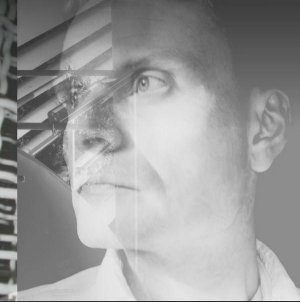 |
|
Tetsuo
Furudate  Tetsuo
Furudate (born in Tokyo) started his career
in experimental firm and video art in 1981.
From the middle of 80's, he gradually turned
toward music through performing art, contributing
to the development of the Japanese noise
music in its early period with other pioneers
such as Merzbow. He has spread his activities
throughout Europe since 1998, with many
concerts and CD releases, collaborating
with Zbigniew Karkowski, Kasper T. Toeplitz
and Leif Elggren. He achieved the premier
show of his newest experimental noise opera,"Othello",
at Podwil in Berlin in 2001. He stayed in
Berlin as a artist residence of Podewil
in 2003. During this time he held premieres
of "Wozzeck" at Podewil in Berlin
and "Auditory Sence of Mr.Roderick
Usher" at Dresdner Zentrums für
zeditgenössische Musik (DZzM) in Dresden.
"Auditory Senced...."won the BLAUE
BRÜCKE prize 2003. He has collaboration
works with Achim Wollscheid, Lillevän,
Akemi Takeya, Sigrid Schnückel and
many more.
BACK TO TOP
|
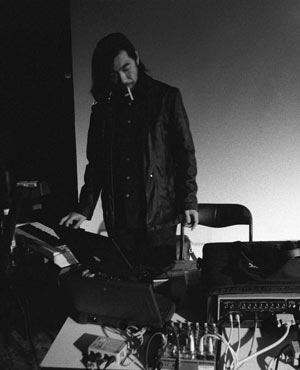
|
|
Patrizia Oliva 
I'm an improviser and I start to perform under the name of Madame P. Today I use this name just for my solo works, otherwise with other musicians, I use my simple name Patrizia Oliva. I'm using mainly the voice as an instrument, in addition to various electronic instruments as the loop station, diktaphone, delay, contact microphones, musical boxes, objects, etc. My live set is pure free improvisation, except sometimes I use for small electronic parts that I have pre-recorded, on which, however sudden. My research - which I uses only a marginal elements of the folk tradition - is aimed at a redefinition of contemporary solo singer; my performance is also gestural and transcendental. I work on radical and experimental music and the research is not standardized. I'm interested to crystallize moments as if they were to become carpet sound of melodies and pure noise. Improvising is not no-composition, it's just that everything happens in that one moment it is instantaneous composition. What leads me to make music today is try to be conscious expression of the cosmos.
I start to play bass in 1998 with a female band called Allun, then i start different collaborations which i quit, like Rosas y Tulipanes, Macaya and Toba. In these first years i worked also with Andrea Marutti and his execellent Afe Records.
In May 2007 I gave life to a duo called Camusi along with the great italian drummer and musician Stefano Giust; he also run a label called Setola di Maiale. Our first self-titled album was released on April 2007 and it was recorded at Lab12, my old house/artspace in Italy.
In 2008 a new trio give life to Gravida, an improvising psichedelic noise female band, with me on vocal and eletronics, Maryclare Brzytwa (USA) on flute, piano, eletronics, laptop and IoIoI on electric guitar, voice and electronics. We had recorded our first album through Incisioni Rupestri and, on January 2010 a second album come up from Setola di Maiale: it's a special and totally acoustic recording ensemble with Kanoko Nishi on koto and Stefano Giust on objects and voice.
With Ninni Morgia on guitar, Silvia Kastel on synth and voice and Stefano Giust on drums I gave life to Carver, a project between experimental rock and improvised music. Raw is our first release, published by Setola di Maiale.
My latest project is Gamra, a quartet with Paed Conca (CH) on clarinet and prepared electric bass, Eugenio Sanna on electric guitar and Stefano Giust on drums: our music is landed in the field of improvised and contemporary music.
I've been touring through Italy, U.S.A, Scotland, United kingdom, The Netherlands, France, Germany, Spain, Portugal, Switzerland, Slovenja, Belgium and Austria.
In early autumn of 2010 i create a blog named Tone Um, which it is mean in ancient language sounds around. In this page I want to show you my research in field-recordings in this contemporany wildworld.
I have improvised with: Andrea Marutti, Tristan Honsinger, Luca Sigurtà, Pamelia Kurstin, Luca Pagani, Roberto Bellatalla, Nora Keyes, Stefano Giust, Gino Robair, Tommaso Rolando, Marco Ravera, Dominik Gawara, Herb Diamante, Jacopo Andreini, Metuo, Stefania Pedretti, Katia Zinichino, A034, Bruno Dorella,Splinter vs Stalin, Virgilio Villoresi, Blanche, Tommy Greenwood, Paul Baran, Radikal Satan, UR, Alessandro Calbucci, Xabier Iriondo, Merlina Moreno, Sektor 304, Francesco Cavaliere, Claudio Gavina, Bjerga, Iversen, Serraglia, Stefano Migliosi, Cherry Blossom, Marino Josè Malagnino, Rinus Van Alabeek, Francesco Calandrino, Jeff Gburek, Mat Pogo, Zazie, Alessandro Buzzi, Roberta JD Meatball, Walter Belloni, Viclarsen, Bugo, Claudio Parodi, Harshcore, Jeremy Stone, Arno (Zea), The Giants of Gender, John Bennet, Claudio Rocchetti, Marco Carcasi, Renato Ciunfrini, Jean Borde', Cristiano Luciani, Ioioi, Daniela Marcuzzi, Cazzurillo, Vonnemaun, Gustavo Costa, Henrique Fernandes, Nicola Guazzaloca, Bologna Improvisers, Love Shark, Tuia Cherici, Edoardo Ricci, Maryclare Brzytwa, Paed Conca, Jean-Michel Van Schouwburg, Marco Loprieno, Guy Strale, Goatgirl and Ely, Destroy Beethoven, Aldo from Palustre, Federica Maglioni, Gianni Mimmo, Chris Iemolo, Kanoko Nishi, Hannes Krebs, Mario Rechtern, Martin Wichtel, Stefan Krist, Eric Arn, Kilian Schrader, Herbert Lacina, Maurizio Bianchi, Alessandro Baris, Beppe Scardino, Sara Mayer, Marco Calcaprina, Eugenio Sanna, Fabrizio Puglisi, Ninni Morgia, Silvia Kastel, Pino Montecalvo, Edi Leo, Vincent Davis, Burkhard Friedrich, Sasha Demand, Sebastian Reier, Jürgen Hall, Anthea Caddy, Dicofone and many more.
BACK TO TOP
|
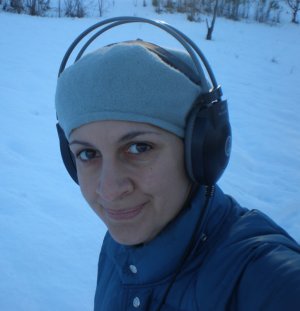
|
|
Murder Corporation 
M.C is born in 1992, nearly as a joke.
The name was chosen later as i felt that fitted perfectly the content of the music that i was making.
I started listening to Heavy Metal, Punk, Hardcore, moving later to Dark Gothic EBM and finally Industrial music.
The first Industrial record i got into was “Discipline” by T.G. .
The people who influenced me the most were Merzbow and particularly Boyd Rice. Also William Bennet and Kevin Tomkins inspired me.
For the first recordings i used mostly tapes, noises, short waves and distorted voices. Successively I adopted a sampler Akai s01 and a tone generator (V.C.O).
BACK TO TOP
|
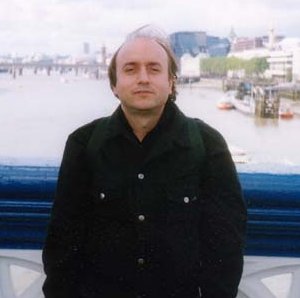 |
|
NUN NUN
was Ezio Albrile.
NUN was one of the first Italian Industrial
act active in the early 80s.
A LOT OF NOISE FOR NOTHING by Ezio Albrile (May
2008)
It's a common habit among teenagers that existential
torments are in relation to sex, drugs and rock'n'roll.
Not taking into account sex and drugs, when I
had that age music soon became one of my favourite
interests. When I was about twenty years old,
a schoolmate, Massimo Chiesa, who I still greatly
admire, enabled me to make the transition between
Beatles and Rolling Stones to a "higher" and more
up-to-date music. He introduced me to what was
the most popular music at the time, the so called
"new wave" and in particular to the new born "industrial
culture". Together with Massimo we gave birth
to a music project called Psychopathic Blossom,
a mix of wave, noise and industrial music. In
the band there was also a third member, maybe
the main member because he owned a reel to reel
tape recorder and most of the instruments. I shamefully
don't remember his name. We self-produced a homemade
cassette, which was well perceived by Turin music
critics (the young Alberto Campo and Renato Striglia
of Radioflash). Some years later, when I was well
accustomed to the recesses of noise and industrial
music, I decided to self-produce , with a 2 years
wage as a conscientious objector, a 7" that was
a bit a synthesis of all the noisy things, that
I was mixing up. The record, that Federico Guglielmi
called "industrial appliance", was the result
of a very archaic technology : pre-recorded noises
filtered through a monophonic synthetizer, compulsated
in a sound texture beat by a drum machine randomly
programmed. All this was NUN, an acronym that
stood for Nacht Und Nebel, a (neo) nazi quotation
that reflected the use, at that time considered
very trendy and "provocative", to retrieve death
simulacrum and turn them into icons, ghosts of
a past, that we thought it would never come back.
Only later, I got to know that NUN is also the
thirteenth letter of the ebraic alphabet, its
shape should recall a boat, or better an ark that
saves the chosen ones : a not-casual circumstance
that marked the beginning of a new path for me.
The record indeed also represented a motive of
meeting and clash between different personalities
and cultures, such as Maurizio Pustianaz (it's
also thanks to his philological attitude that
the re-issue of the record and other works was
possible), Maurizio Bianchi (who in a short time
began a questionable religious path) and the Italian
Industrial Music great guru Vittore Baroni. The
7" was distributed by Giulio Tedeschi, one of
the first Italian independent producers: Tedeschi,
in spite of his apparent solidarity, didn't believe
much in my project. The record practically didn't
circulate: this episode is the origin of a conflict
between Vittore Tedeschi and me that lasts to
this day. It has been said that the myths and
the images exhibited by the Industrial Culture
intended to exorcise a past that we thought concluded.
However, the facts and daily reality have tragically
denied these expectations: recent history shows
us a society and a "civil" world in which violence
and genocides have mutated, proposing them again
at the level of local conflicts. Totalitarianism
has presented again under a different form, a
"soft" and narcotic global well being. Perhaps
it is the "Globalization" that the Industrial
Culture wasn't able to predict and exorcise. At
that time the feared Apocalypses were those of
war and implosion; there were talks of bombs,
the last discovery being the neutron bomb, the
"cold bomb" able to plan and enable the repopulation
of an area subjected to its effects. But it turned
out that human madness has been much more poisonous
than what mentioned above. The industrial Culture,
once exhausted its original predominantly social
impulse changed in a sort of magic ritualism.
A mutation that has continued joining the opposite,
at the "magic of the extremes". Therefore, we
had the pleasure of seeing the Italian followers
of anglo-saxon magic spermatization, transforming
them into intransigent inquisitors paid by a Catholicism
in decay. I have never vomited on the cultural
value in which I always made reference to: the
"true" (neo) nazists years later insulted me and
made fun of my music project on one of theirs
scanty publications. I leave to them, to the "Cari
Camerati" , the wreckage of a culture that the
Industrial Music has celebrated as a world to
be forgotten.
BACK TO TOP
|
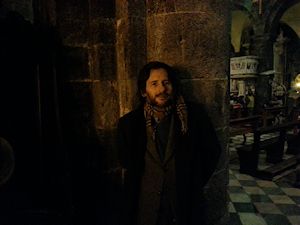
|
|
Lasik Surgery
Lasik Surgery is Pierpaolo Zoppo (Mauthausen Orchestra)
and Gianluca Favaron (Ab'she,Under The Snow).
They have at their active 3 albums (2012).
BACK TO TOP
|
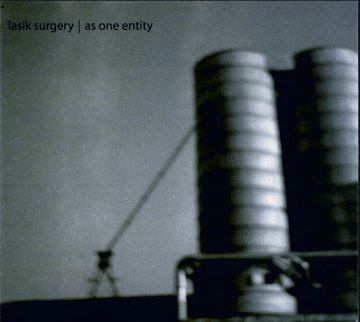 |
|
Land Use
Land Use is David van Ravesteijn. Land Use is
a music project started in 2003 operating in the
field of drone and noise music. He has released
several collaborations with Maurizio Bianchi /M.B.
BACK TO TOP
|
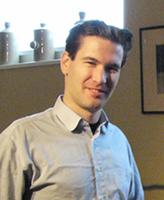 |
|
Mauthausen Orchestra / Pierpaolo Zoppo 
One of the early Italian power-electronics projects,
Mauthausen Orchestra, in the person of Pierpaolo
Zoppo, started in 1982, releasing tapes on his
own label Aquilifer Sodality. His work explored
morbid subjects, usually extreme sex, perversion,
tortures and disease, and the sound was a brutal
collage of noise, electronics distortions and
inhuman vocals. Mauthausen Orchestra stopped in
1986, some recordings from 1988 were published
ten years later by Xn Recordings. In 1997 Zoppo
resurrected the project and released some new
material, while a series of reissues of the early
cassettes was published by Slaughter Productions.
In later years Zoppo started a music project with
Gianluca Favaron called Lasik Surgery. He also
took part in the project Maribor with Andrea Marutti,
Gianluca Favaron, Giuseppe Verticchio, Maurizio
Bianchi e Stefano Gentile. His later works have
been released by Bloodlust!, Silentes and menstrualrecordings.
Pierpaolo Died on 16th June 2012
BACK TO TOP
|
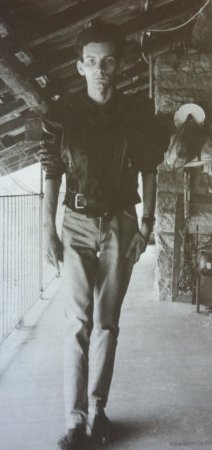 |
|

The New Sadism / Observation Clinique / Swastika Kommando
Pietro Mazzocchin was born in Bassano del Grappa,
Italy.
In the early 80s Pietro Mazzocchin was very active in the industrial/noise
scene.
He put out several cassettes under different moniker:
Swastika Kommando, The New Sadism, Observation Clinique and
also as Lyoto Music togheter with Pierpaolo Zoppo of the legendary
Mauthausen Orchestra.
Some of his tapes were published by Broken
Flag (UK), Recloose Organisation (UK) and Aquilifer Sodality
(Italy). Many tapes were also self released.
In 1985 Pietro left the scene.
In 2010 in collaboration with menstrualrecordings a reissue compaign was started.
BACK TO TOP
|
 |
|
Emil Beaulieau  Emil Beaulieau is the nom de plume of Ron Lessard.
His label's cassettes, purchased via his Xeroxed record lists throughout the 80's, turned many people on to underground sounds. As myth has it, Lessard brought Masami Akita (aka Merzbow) to play at his Lowell record store in the early 80's. As people wandered in, records were playing everywhere, some systems had what appeared to be bubble gum for needles, others seemed to have rusty nails. For whatever reason, that story has stuck with him for a long time.
He currently keeps in print the United Diaries label (Nurse With Wound catalog, etc.) and puts out collectable records, from Merzbow, compilations, F/i / Boy Dirt Car boxes, and the infamous lock groove collections. He also runs a music store in Lowell, MA. His solo performance vehicle is confrontational performance art, inspired by the likes of Paul McCarthy and Mike Kelley.
BACK TO TOP
|

|
Merzbow  Masami Akita (born December 19, 1956), better known by his stage name Merzbow , is a Japanese noise musician. Since 1980, he has released over 400 recordings.
The name Merzbow comes from German dada artist Kurt Schwitters' artwork, Merzbau, where Schwitters transformed the interior of his house using found objects. This was chosen to reflect Akita's dada influence and junk art aesthetic. In addition to this, Akita has cited a wide range of musical influences from progressive rock, heavy metal, free jazz, and early electronic music to non-musical influences like dadaism, surrealism, and fetish culture. Since the early 2000s, he has been inspired by animal rights and environmentalism, and has become a vegan.
As well as being a prolific musician, he has been a writer and editor for several books and magazines in Japan, and has written several books of his own. He has written about a variety of subjects, mostly about music, modern art, and underground culture. His more renowned works have been on the topics of BDSM and Japanese bondage. Other art forms Akita has been interested in include painting, photography, filmmaking, and Butoh dance.
In 2000, Extreme Records released the 50 CD box set known as the Merzbox. Akita's work has been the subject of several remix albums and at least one tribute album. This, among other achievements, has helped Merzbow to be regarded by some as the "most important artist in noise".
BACK TO TOP
|
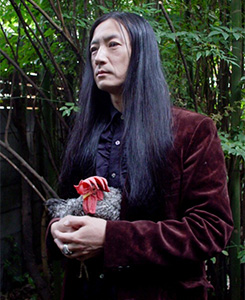
|
The New Blockaders  The New Blockaders may sound like a hip Indie Rock band, and they may want you to believe such a thing to lure unsuspecting listeners. As merchants of 'anti-music,' they embrace Luigi Russolo's 1913 Art of Noise manifesto and although Russolo is widely credited as being the first major noise theorist, contemporary Noise artists like TNB were the first to progress from the use of noise as assault on tonality to the development of a rich, complex language capable of subtleties of shade and nuance without sacrificing any of its feral power or ability to unlock repressed personae in the listener.
Their manifesto (1982) proclaims, 'Blockade is resistance. It is our duty to blockade and induce others to blockade: Anti-music, anti-art, anti-books, anti-films, anti-communications. We will make anti-statements about anything and everything. We will make a point of being pointless…’ Everything about TNB entails refusal. The title of their collection Gesamtnichtswerk is important here. It reminds us of Wagner’s dream of the ‘total art work’ – the Gesamtkunstwerk, but the art is replaced by nothing.
Lazier souls than I would place TNB within the pantheon-lineage of UK Industrial, although I see them as a free-standing unit with more in common with the Futurists and (maybe) Einsturzende Neubauten (without the ‘songs’): Electrical tools, metal, ear-shredding static noise - the very definition of nihilism through sound. Superficial similarities exist to forebearers like AMM's free form music aesthetic, Throbbing Gristle's Second Annual Report and Lou Reed's one-off decadent, noise-loop experimentation Metal Machine Music. TNB differ in that they have never burdened themselves with writing excessive, sleazy Rock Pop put on, prone to current Pop culture sampling obsessions or attempts at confining unruly, nihilistic sounds. They create a true musical sound cluster of destruction to such an extent that their so-called 'anti-music' transcends nihilism into positivism/optimism suggesting new music.
TNB always suggested more than a band or musical project. They are bent almost as much on philosophy and literary ambitions, issuing manifestos and texts and referencing the likes of Debussy and Nietzsche. TNB never set out to be part of a self-glorifying youth movement where pompous, romanticized bullshit dies hard in an endless, capitalistic magic show. Instead, they depict the emotional tonalities of an ambivalent, ambiguous new century with no form or direction. Their musical legacy offers respite from the fraudulent herd of co-opted streamlined sounds, which masquerade as experimental.
They served as a major influence on legendary Noise pioneers as Merzbow and their influence on the current crop of popular crossover Noise artists such as Prurient and Wolf Eyes is immeasurable. Collaborations in recent years with artists such as Sonic Youth's Thurston Moore have brought their anti-sound to a younger and diverse audience. The metal-bashing of K2, the awkwardness of Runzelstirn & Gurgelstock, the density of Macronympha and the abrasiveness of Merzbow all owe something to the anti-music of TNB. They, more than any other, define the essence of true Noise music both in art and in act.
BACK TO TOP
|

|
Giancarlo Toniutti Starting from free electroacoustic improvisations with Tiziano Dominighini in 1978 (later naming the duo "airthrob in"), enlarging his palette with a Crumar analog synthesizer in late 1980. Giancarlo Toniutti studied electronic music at the Conservatory in Venice (1982-1985) under Alvise Vidolin. Since 1985 he's worked only with acoustic sound-sources with analog treatments (magnetic tape etc.). His interest in visuals, installations and other art forms has been reflected in many of his works and other phenomena simply defined by Toniutti as "sound sites" as well as projects based on heterogeneous approaches to sonic acoustic materials. He has worked with many artists, including Siegmar Fricke, Andrew Chalk, and more recently James Wyness.
BACK TO TOP
|
 |
|
|
 |
|
